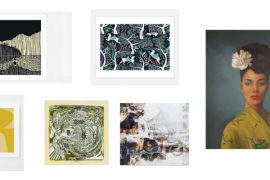Photography by Wisconsin State Journal, courtesy Chazen Museum of Art
Power matters: who has it and who doesn’t, how those who have it choose to use it and how those who lack it can get their fair share. These are some of the issues explored in “Sifting & Reckoning: UW-Madison’s History of Exclusion and Resistance” (Sept. 12-Dec. 30), a new multimedia exhibition the university’s Public History Project has prepared for the Chazen Museum of Art.
Now in its third year, the Public History Project examines the exclusion and discrimination that complicate UW-Madison’s history, grappling with thorny questions about belonging and challenging the public to do the same. “Sifting & Reckoning” presents artifacts that illustrate marginalized groups’ struggles and triumphs over more than a century of campus life.
According to Kacie Lucchini Butcher, the project’s director and the exhibition’s lead curator, “Sifting & Reckoning” is a crucial tool for building a better future for the entire UW-Madison community, especially its most vulnerable and marginalized groups.
“By uncovering our history, we get a better sense for the progress we’ve made and the myriad ways we have fallen short of our ideal,” she says. “Our hope is that the exhibition offers our students, employees, administrators and the broader community ideas for how they can take an active role in creating change and achieving a more equitable UW-Madison.”
In collaboration with co-curators Taylor Bailey and Adriana Arthur, Butcher selected thought-provoking objects from the UW archives and crafted descriptions of them to provide context and spark conversations about barriers to inclusion. These objects include the Pipe of Peace, a ceremonial object white students used in a popular mock Native American ceremony, as well as photos and yearbooks, films, athletic memorabilia, protest flyers and other ephemera from 20th-century campus life.
The Public History Project’s website features additional materials, including recordings of oral histories that bring to life the memories, experiences and emotions of people at different points in the university’s struggle to recognize and respect difference. Lucchini Butcher recommends starting your journey with these oral histories, as well as the project’s blog posts about Black Greek letter organizations and the “gay purge” of the early 1960s, and then visiting the in-person exhibit.
“We have a lot of materials coming together to help welcome people to the exhibit, no matter where they are, but we also hope everyone who is able visits in person,” she says.




